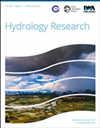Water quality level estimation using IoT sensors and probabilistic machine learning model
IF 2.4
4区 环境科学与生态学
Q2 Environmental Science
引用次数: 0
Abstract
Drinking water purity analysis is an essential framework that demands several real-world parameters to ensure the quality of water. So far, sensor-based analysis of water quality in specific environments is done concerning certain parameters including the PH level, hardness, TDS, etc. The outcome of such methods analyzes whether the environment provides potable water or not. Potable denotes the purified water that is free from all contaminations. This analysis gives an absolute solution whereas the demand for drinking water is a growing problem where the multiple-level estimations are essential to use the available water resources efficiently. In this article, we used a benchmark water quality assessment dataset for analysis. To perform a level assessment, we computed three major features namely correlation-entropy, dynamic scaling, and estimation levels, and annexed with the earlier feature vector. The assessment of the available data was performed using the statistical machine learning model that ensemble the random forest and light gradient boost model (GBM). The probability of the ensemble model was done by the Kullback Libeler Divergence model. The proposed probabilistic model has achieved an accuracy of 96.8%, a sensitivity of 94.55%, and a specificity of 98.29%.利用物联网传感器和概率机器学习模型估算水质水平
饮用水纯度分析是一个基本框架,需要多个真实世界的参数来确保水质。迄今为止,基于传感器的特定环境水质分析主要涉及 PH 值、硬度、TDS 等参数。这些方法的结果是分析环境是否能提供饮用水。饮用水指的是没有任何污染的纯净水。这种分析给出了一个绝对的解决方案,而饮用水需求是一个不断增长的问题,因此必须进行多层次的估算,才能有效利用现有水资源。本文使用基准水质评估数据集进行分析。为了进行水平评估,我们计算了三个主要特征,即相关熵、动态缩放和估算水平,并将其与先前的特征向量一起作为附件。对可用数据的评估是使用随机森林和轻梯度提升模型(GBM)组合的统计机器学习模型进行的。集合模型的概率由 Kullback Libeler Divergence 模型完成。所提出的概率模型的准确率为 96.8%,灵敏度为 94.55%,特异性为 98.29%。
本文章由计算机程序翻译,如有差异,请以英文原文为准。
求助全文
约1分钟内获得全文
求助全文
来源期刊

Hydrology Research
Environmental Science-Water Science and Technology
CiteScore
5.30
自引率
7.40%
发文量
70
审稿时长
17 weeks
期刊介绍:
Hydrology Research provides international coverage on all aspects of hydrology in its widest sense, and welcomes the submission of papers from across the subject. While emphasis is placed on studies of the hydrological cycle, the Journal also covers the physics and chemistry of water. Hydrology Research is intended to be a link between basic hydrological research and the practical application of scientific results within the broad field of water management.
 求助内容:
求助内容: 应助结果提醒方式:
应助结果提醒方式:


